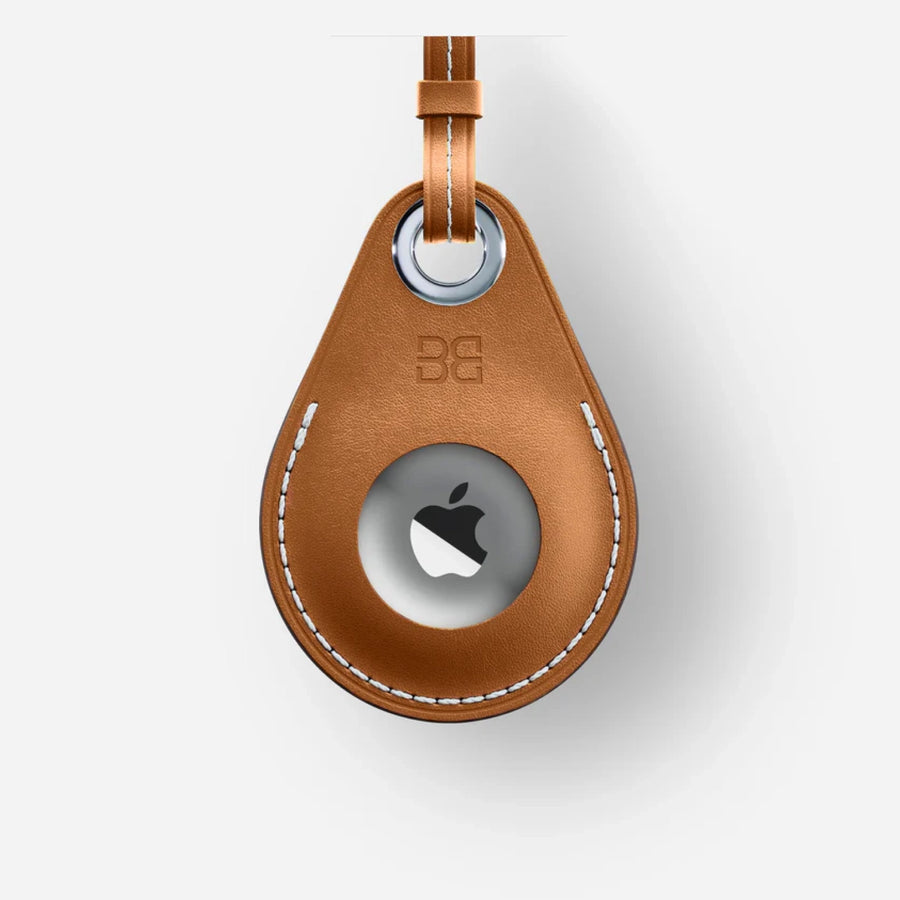Titanium | Model G1-T | Silver

It is April 20, 2021 and part of the team has actually already finished work. Today, however, the assembled team is sitting together in the workshop and staring spellbound at the screen above the meeting table. At 7 p.m. sharp, Tim Cook steps onto the virtual stage and the Apple keynote begins.
These events are extremely important to us. Of course, we usually have a vague idea of what to expect in Apple's livestream, but it's not uncommon for Tim to have a surprise in store for us, and we want to respond quickly with suitable BandWerk accessories.
Rumors about AirTags have been floating around for a few years now. A small Bluetooth tracker that is supposed to ensure that we always have an eye on our keys and other essential things. We had already expected the launch in 2019 and 2020, but there has been nothing concrete about the exact dimensions and shapes so far.
And indeed: Today Apple is finally presenting the smart item trackers. They are flat, round and do not have their own eyelet to attach them directly to a key ring, for example. For us as an accessory manufacturer, this is of course a welcome template. (Thanks Apple!)
Despite all the excitement about the opportunity, it also means that the night will be long. We'll get to work straight after the keynote.
First of all, it would be helpful to hold a real AirTag in your hand. However, this is difficult because the products will not be on the market for almost two weeks and can only be pre-ordered at the end of the week at the earliest. We decide to make a provisional 3D model of the AirTags and create a few units for prototyping in the 3D printer.
At the same time, we check whether we already have leather in stock that would be suitable for the production of the AirTags pendants and decide on a vegetable-tanned and polished smooth leather, which we also use for the production of our AirPods cases.
The design process can begin.
Vincent (Co-Founder)
"New products often start out as rather unsightly scribbles in my notebook. Luckily, we have Jessi, a team member who can turn my ideas into usable product sketches."
Vincent (Co-Founder)
"New products often start out as rather unsightly scribbles in my notebook. Luckily, we have Jessi, a team member who can turn my ideas into usable product sketches."
Once we have decided on an approach, we use a drawing program to create real cutting patterns from the first rough product sketches, which we can then feed into our laser cutter. The laser is a very valuable tool for prototyping because it allows us to produce individual parts that can be used extremely quickly.
As soon as the design team has finished its part of the work, the project goes two floors down into the hands of Daniel, our pattern maker. In total, he builds five or six different prototypes over the next few days. Different leather and thread thicknesses, edge colors and metal eyelets are used.
The following Friday we decided on a final prototype, which will now go into series production.
For productivity reasons and to ensure consistent quality, the prototyping process cannot be transferred one-to-one to series production.
In the next few days, we will be converting our machines to series production and having punches and templates made. We expect to be able to produce around 150 AirTag pendants a day. As it later turned out, this was probably a bit too optimistic - at least for the first few days.
Despite some adversities, the first finished tags left our production on Friday, April 30th, ten days after the launch of the AirTags.
We have had two busy weeks in which we have expanded our portfolio with a great product that we are very proud of.
